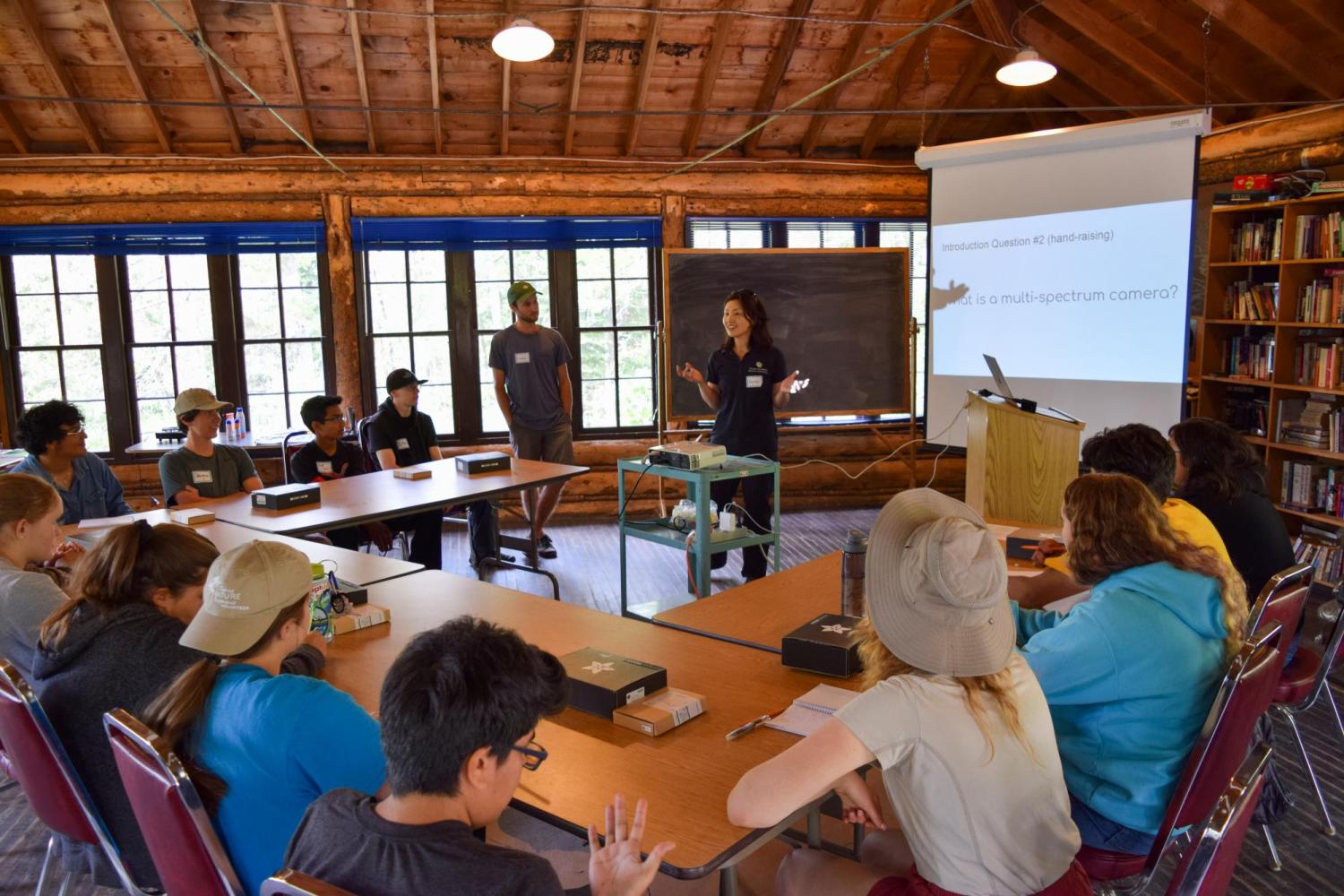High school students explore remote sensing at the Mountain Research Station

Science, engineering and nature are coming together for Colorado high school students at a unique summer camp.
The 2019 CU Science Discovery Mountain Research Experience, a weeklong sleepaway camp program held at the University of Colorado Boulder Mountain Research Station, north of Nederland, is a chance for kids to learn about the possibilities of scientific research outside the traditional school setting.
Remote sensing is the science of investigating aspects of the environment from a distance, typically using instruments aboard aircraft or satellites. It often involves monitoring conditions not visible to the naked eye. That is where the camp project comes in. Working from the Mountain Research Station’s Megaron Cabin, a one-room log cabin that is simultaneously rustic and technology-rich, the students are building special digital cameras to explore the world in visible, infrared and ultraviolet light.
Hands On Learning
“They’re going to learn a little about microcontrollers, programming, working in the terminal and how things look outside the visible light spectrum,” said Tomoko Matsuo, who is leading the day’s lesson.
Matsuo is an assistant professor in the Ann and H.J. Smead Department of Aerospace Engineering Sciences at CU Boulder whose research is in remote sensing.
“We want to give them an appreciation of the science and technology and the hands-on work that you can do. We also want them to know that anyone has the capability to do this,” said Nick Dietrich, an aerospace PhD student, one of several undergraduate and graduate students advised by Matsuo assisting with the camp for the day.
While the high schoolers are there to learn and have fun, Matsuo has brought her college students to help them sharpen their skills as educators.
“I want them to have experience interacting with high school students,” Matsuo said. “I want them to be able to explain things. If you understand the material really well, you should be able to explain it to others in simple terms.”
Inside and Out
After a brief lesson on remote sensing, the students assembled their cameras - comprised of ultra-tiny handheld Raspberry Pi Linux computers, batteries, a camera lens, and additional filters for UV and infrared light. They then set out to explore a series of stations around the cabin and surrounding alpine forest to see how things appear using the different filters.
“Part of the fun is just troubleshooting,” said Valerie Svaldi, a Colorado School of Mines metallurgical engineering senior who is completing a summer research program with Matsuo. “We want the kids to do as much problem-solving as possible when something goes wrong or isn’t working -- that's part of engineering.”
Inside the cabin, the students snap photos of objects ranging from sunscreen to dollar bills in UV and infrared. Once outdoors, they explore the appearance of flowers, other plants and minerals. There are many things in nature that glow in ultraviolet light, including some insects and arachnids - scorpions are likely the best known, although the Mountain Research Station is at a high enough elevation they are thankfully not much of a worry.
The day’s program was just one part of a weeklong experience for the high school students, who spent time each day with an array of scientists and researchers to learn more about what they do.
“Students get reasonable exposure to science in their high school classes, but it’s limited to science in a laboratory,” said Alexandra Rose, CU Science Discovery’s Broader Impacts Liaison and Institute of Arctic and Alpine Research Ecologist. “There is very little outdoor work. This camp is about exposing them to as many different ways of doing science out-of-doors as possible.”
For Kara Jansen, a rising senior at Peak to Peak Charter School in Lafayette, it was an exciting summer experience.
“I want to be outside and connecting with people who have the same passions for nature and environmental biology that I do,” Jensen said. “I wanted to be part of a group that wasn't just playing video games all summer.”

